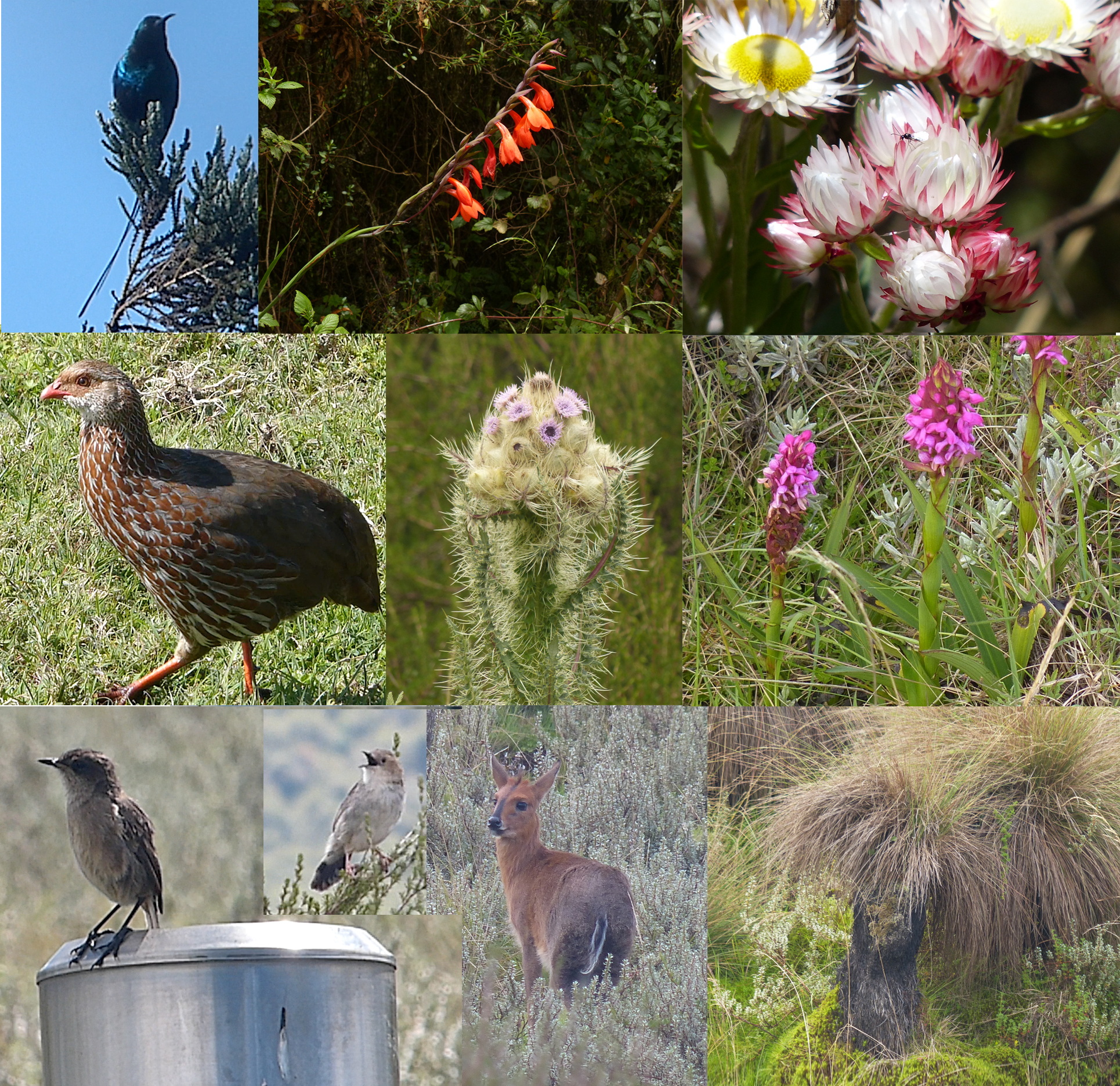From: Brian Finch <birdfinch@gmail.com>
Date: 2016-06-06 19:42
Subject: ABERDARES FISHING LODGE18th/19th May 2016
ABERDARES FISHING LODGE
18th/19th May 2016
Dear All,
On 18th May Nigel and Julia Hunter and myself set off to look for the
recently discovered Striped Flufftails near the Fishing Lodge in the
Aberdares. As it had been raining in the past few days we were
apprehensive of the weather conditions up there or if we could even
make it to the cabins where we were booked for the night.
It was only two hours from Nairobi, the route via Kinangop Flyover and
Njabini is still in excellent condition. When we arrived we were very
surprised to see that they had not been experiencing the wet
conditions we has had in Nairobi, and the roads were fine inside the
Park. We tried to find the ranger that was with Callan Cohen and
Michael Mills when they heard the flufftail, but although we tried at
the two gates he was apparently on leave. We followed directions that
we had been given and tried the area several times, as well as other
good looking areas several times as well, in late morning, afternoon,
dusk and early morning but there was no response from any bird. It is
possible that in the three weeks since they were heard, they have
chicks to look after now, and not responsive or vocal. They have a
very short seasonal calling window unlike Red-chested and
White-spotted which are much noisier.
Although we only stayed one night and left late morning next day we
had a superb time up there, and the cabins are so very well appointed
and very pleasant staff. We could have been happy to spend several
days there, but sadly did not have the time available for this
venture.
Jackson’s Francolins were all over the place and had well grown young,
we did not see any chicks. Hill Chats were very numerous and a few
with large young, and Aberdare Cisticolas were so very noisy and
co-operative, in numbers I cannot recall before. For most of the year
they are reluctant to show themselves, but in the breeding season they
seem to be all over the place. Along the ridges next to the roadside
where the Tree Heather is quite dominant we found Scarlet-tufted
Malachite Sunbirds that were singing and defending territories, but we
found none at the flowering Red-Hot Pokers. It seems that the sunbirds
were insectivorous at the time we were there.
It was the plants that stole the show, and many fine species were
showing well, and the game especially around the cabin were very tame,
especially the Common Duiker of the endemic alpine race altivallis.
Francolins would come up to the deck around the cabins whilst Moorland
Chats sat around on the rain gauge.
On the way back towards Njabini, just after turning right off the dirt
road onto the paved road at North Kinangop, we stopped at the pond
where a pair of Lesser Jacanas raised two young last year, and pleased
to see that they have raised another bird this year.
Best to all
Brian
KEY TO MONTAGE
TOP ROW
FAR LEFT
Scarlet-tufted Malachite Sunbird
Establishing territories on Tree Heather ridges. Seems to be irregular
in its visitations to the Aberdares, unlike Mt Kenya.
CENTRE
GLADIOLUS - Gladiolus watsonoides
FAR RIGHT
EVERLASTING DAISY - Helichrysum formosissimum
CENTRE ROW
FAR LEFT
Jackson’s Francolin were all over the moorland area.
CENTRE
THISTLE - Carduus keniensis
FAR RIGHT
TERRESTRIAL ORCHID - Disa hircicornis (?)
BOTTOM ROW
FAR LEFT
Moorland Chat were very common
SECOND FROM LEFT
Aberdare Cisticolas were very numerous
CENTRE
Common Duiker of alpine race altivallis
FAR LEFT
TUSSOCK SEDGE - Carex erythorrhiza
The habitat of the Striped Flufftail. This distinctive species builds
fibrous trunks from successive leaf growth, and the leaves and
flowerheads sprout like a drooping tussock from the top. Where there
are dense patches growing in marshy ground, it can be difficult to
walk through and presumably the Flufftails feed completely covered by
the tunnels formed by cascading tufts of vegetation. It could make it
difficult to find when they are not calling!



